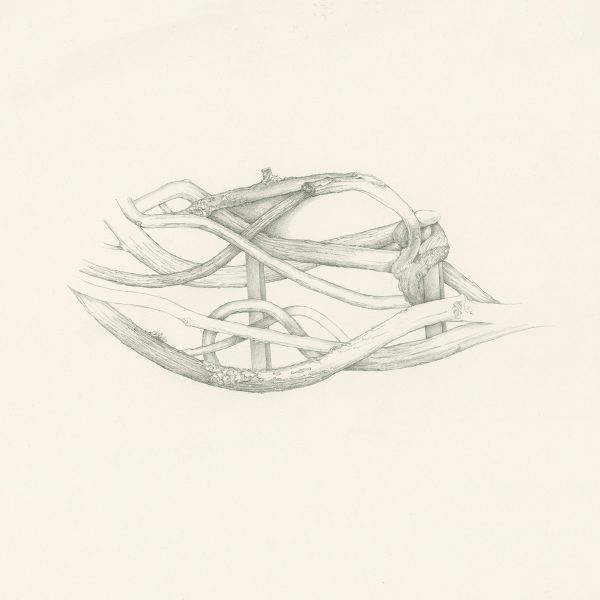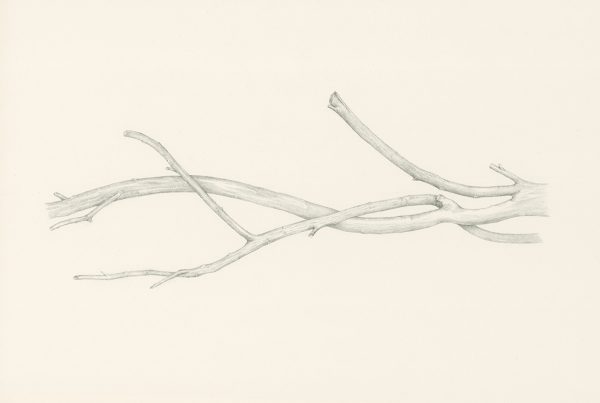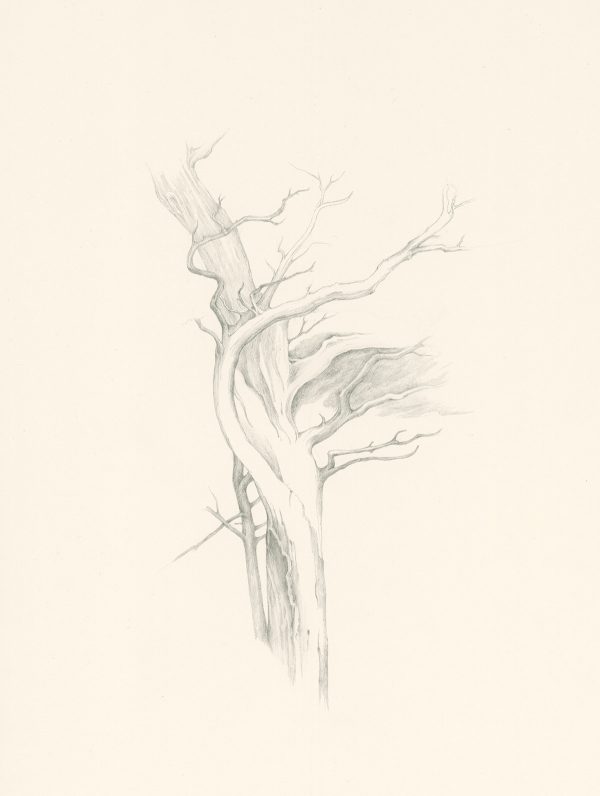
Pandemic Pause | New Directions
Since the pandemic lockdown began two months ago I have been working on a series of drawings. The original impetus came from my ongoing project, #100DaysOfTheSpaceBetween, introduced last month. Although the project also involves photography and other media, I decided to use drawing as the foundational practice. In this strange time, cut off from family, friends or social contact, I have sometimes floundered. The isolation of confinement has thrown me into emotional states surreal in their intensity, and the quiet absorption and focus of drawing has become a calm oasis in my days.
As the solitudes of the pandemic have segued with shocking speed into the pandemonium of a June aflame with flash grenades and tear gas I have questioned, as many artists have, the relevance of their art in this time. Social media demands a simple story, an allegiance to one side, and the embrace of slogans with no nuance. I reel in horror at the videos of George Floyd’s murder and wonder if I should drape a black tarp over my Instagram account? For how long? Do I stand with the rioters? The protesters? The police? Or is it possible to stand in a place where I can see from all points of view? Who gets to decide?
These are questions I’ve been asking my whole life. I grew up immersed in politics. At six I was handing out leaflets protesting racism at the local grocery, and I walked my first civil rights march in 1963 when I was nine, carried through the streets on a tide of hope with my mother, singing We Shall Overcome. Has anything changed? Yes/No. Have the conversations changed? Very little. Inequality runs even deeper, people are still shouting, and political factions still take no prisoners. What is different is the evolution of consciousness that emerged and ran parallel with the political movements that began in the 1950’s: Yes/And. We can feel the violence and the pain of what goes on in this world and we can also hold onto what is beautiful and individual and try to make that bigger, even if it starts very small. Change can happen through legislation or blunt force, or sometimes through the simplest discovery of common ground, one shared moment at a time.
Art, Meet Politics
In that spirit I am offering this set of Pandemic Pause drawings for sale, with 30% of the proceeds going to support Fair Fight, the organization started by Stacey Abrams to protect the right to vote. When people say “nothing has changed” or “we have no power” they forget that only 58% of the population voted in 2016. That’s leaving a lot of power and change on the ground. Stacey Abrams has been involved with voter registration and electoral reform for more than a decade. In 2018 she was the first African-American woman to gain a major party gubernatorial nomination in the U.S.. She narrowly lost to Brian Kemp, with evidence suggesting the loss was due to voter suppression. Abrams has built a powerfully effective organization since then, focused on protecting the vote. I would be glad to send contributions towards her efforts and the hope for change, one vote at a time.

About the drawings
My tools have always been charcoal and ink, and until two months ago I had done almost no drawings in pencil. I have no idea why I suddenly reached for one thin reed of 2 B gray and kept going. I’ve never had the patience for the medium, but suddenly all I have is patience, an unexpected gift of the pandemic. As I’ve looked back in time, I think these drawings may have started 46 years ago, in a class at Cornish School of the Arts. “Terminal Drawing,” was advertised as the last drawing instructions we would need for the rest of our life: our minds would be so transformed that we would never take another class. I was skeptical then, but now I am not so sure.
At Cornish I learned in one remarkable afternoon when all time stopped and the air was completely silent, how to draw in silverpoint. Stephen Hazel showed us how to prepare a sheet of paper with a fine white ground, hone and hold the stylus of metal, and then how to breathe, look up at our subject, and look down, drawing a fine shadowy hint of form across the page. I cannot remember how to play the violin, guitar, or piano, or how to conjugate German verbs, but something about that one-hour lesson with a piece of silver stayed embedded, hidden but not forgotten until now, when the pandemic pulled me back into a forgotten world.
While I was at Cornish I lived in a studio apartment looking out at a Russian church. I told time by how the light curved across the gold and blue domes and when the choir loft opened its windows. In a good year the church would make repairs, and I could watch for months as men stood on ladders and laid gold leaf. For a week after my lesson in silverpoint I drew the elegant curves of the domes, and the shadows of the ladders leaning against them. And when the drawings were done I never touched silverpoint again.

The sense of that time has returned as I’ve been looking at the space between now and then, emptiness and form, quiet and noise. I am using the pencil as though it is a rod of silver, and when I get lost I ask for advice from Ingres, Hans Holbein the Younger or Charles Sheeler. I began with the woven vines I saw on my walks, then the intervals of branches and sky, and the delicate shapes of camellias falling in my garden. Each drawing is completed in about three days, and the work is done as much by walking away as it is sitting and covering the page. Like watercolor, graphite is delicate, and is easy to overwork. Walking away saved many of them from my own misguided impulse for perfection. Coming back after hours weeding, walking, or obsessing over the news I could see them clearly and know what to do next.
This is now day 65 of #100DaysOfTheSpaceBetween, give or take what feels like a lifetime. With Seattle still in Phase One of the Lockdown I do not know yet when I will be showing in a gallery open to the public. In the interim I hope that this offering of work done in contemplation and peace can bridge the space between art and politics, and support those on the front lines doing the hard work of uniting our country in the electoral process.
Each image is done on an 11 x 16” sheet of vintage Moleskine. The cream colored paper has a luscious fine grain that picks up the slightest pressure. (Click each image to view larger.) The drawings fill anywhere from half to two thirds of the page, and may be matted as desired. The signature is at the bottom of the page to allow freedom to crop. The sizes and the tone of the pieces fit well with the Ikea Hovsta frames in maple. Drawings can be shipped but if you live in Seattle I am happy to meet you at my studio or deliver within the mainland of the city (not unfortunately West Seattle…..). Because this is a benefit sale I am not listing in my Etsy shop to keep costs down. Prices listed are before sales tax and a $15 flat fee for shipping within the U.S.. Please contact me by email iskra(at)iskrafineart.com to make purchase through Paypal, Venmo or check. My hope is to send at least $1,000 to Fair Fight to protect the vote in 2020. The sale will last until July 5th.









Drawing States of Mind, a moment in the studio, April 19th 2020
Perhaps you get to a point where you cannot tell if you are prisoner, survivor or liberator. You get lost in the negative space between the links in the chain and forget about the key taped to the back of the drawing that might just let you out. In the interim perhaps you go and listen to the president talk about liberating three democratic states from the tyranny of being careful and avoiding breathing on people who unbeknownst to you had asthma or were older than they looked and could die next week because you breathed on them. Or you place a back order for ZINC, vitamin C, batteries, chive seeds, and Costco’s house brand of albacore tuna fish which is back-back-back ordered because apparently it’s recommended in the uncut version of Apocalypse Now as essential food you should have in your pantry.
You do all those things, then you come back later and the drawing changes and you have changed just in that long detour of not drawing and fighting the guilt of not drawing. That guilt was needless, pointless. St. Atocha, patron Saint of Prisoners, stands just outside the gates with his basket, wearing his adorable blue cloak and dark eyelashes. You have to remind yourself of the shortest prayer in the English language which is just one word: mercy.
For purchase contact me at iskra (at) iskrafineart.com
To read my latest writing on Medium check out Optimist in Training from the Isolation Diaries. Keep your eye on the light!

Jere Smith says
Delicate and beautiful drawings, Iskra. I wish you well with your ambitious project.
Kris Fulsaas says
Iskra, how wonderful to find what you’re working on! I thought of you this year when I’d heard of your mom’s passing—my thoughts were with you then, as now. Your pencil drawings are gorgeous! And the organization you’ve chosen to support reflects who I remember you to be.. Blessings!